当前位置:网站首页>[deep learning] semantic segmentation experiment: UNET network /msrc2 dataset
[deep learning] semantic segmentation experiment: UNET network /msrc2 dataset
2022-07-07 15:07:00 【zstar-_】
This experiment uses Unet Network pair MSRC2 Data sets are divided
Source code files and MSRC2 See the end of the text for the data set acquisition method
1. Data partitioning
Organize the picture data from the folder into csv file , Each line represents its path
class image2csv(object):
# Split training set Verification set Test set
# Make corresponding txt
def __init__(self, data_root, image_dir, label_dir, slice_data, width_input, height_input):
self.data_root = data_root
self.image_dir = image_dir
self.label_dir = label_dir
self.slice_train = slice_data[0]
self.slice_val = slice_data[1]
self.width = width_input
self.height = height_input
def read_path(self):
images = []
labels = []
for i, im in enumerate(os.listdir(self.image_dir)):
label_name = im.split('.')[0] + '_GT' + '.bmp'
# Because the size of each picture is different , Here is a simple screening , Only the length and width are greater than 200px Was selected
if os.path.exists(os.path.join(self.label_dir, label_name)):
size_w, size_h = Image.open(
os.path.join(self.image_dir, im)).size
size_lw, size_lh = Image.open(
os.path.join(self.label_dir, label_name)).size
if min(size_w, size_lw) > self.width and min(size_h, size_lh) > self.height:
images.append(os.path.join(self.image_dir, im))
labels.append(os.path.join(self.label_dir, label_name))
else:
continue
self.data_length = len(images) # The length of the pictures in both folders
data_path = {
'image': images,
'label': labels,
}
return data_path
def generate_csv(self):
data_path = self.read_path() # Stored path
data_path_pd = pd.DataFrame(data_path)
train_slice_point = int(self.slice_train*self.data_length) # 0.7*len
validation_slice_point = int(
(self.slice_train+self.slice_val)*self.data_length) # 0.8*len
train_csv = data_path_pd.iloc[:train_slice_point, :]
validation_csv = data_path_pd.iloc[train_slice_point:validation_slice_point, :]
test_csv = data_path_pd.iloc[validation_slice_point:, :]
train_csv.to_csv(os.path.join(
self.data_root, 'train.csv'), header=None, index=None)
validation_csv.to_csv(os.path.join(
self.data_root, 'val.csv'), header=None, index=None)
test_csv.to_csv(os.path.join(self.data_root, 'test.csv'),
header=False, index=False)
2. Data preprocessing
Color and classification label conversion
Semantic segmentation is mainly to build a color map (colormap), Give different color labels to each class of segmented objects .
def colormap(n):
cmap = np.zeros([n, 3]).astype(np.uint8)
for i in np.arange(n):
r, g, b = np.zeros(3)
for j in np.arange(8):
r = r + (1 << (7 - j)) * ((i & (1 << (3 * j))) >> (3 * j))
g = g + (1 << (7 - j)) * ((i & (1 << (3 * j + 1))) >> (3 * j + 1))
b = b + (1 << (7 - j)) * ((i & (1 << (3 * j + 2))) >> (3 * j + 2))
cmap[i, :] = np.array([r, g, b])
return cmap
class label2image():
def __init__(self, num_classes=22):
self.colormap = colormap(256)[:num_classes].astype('uint8')
def __call__(self, label_pred, label_true):
pred = self.colormap[label_pred]
true = self.colormap[label_true]
return pred, true
class image2label():
def __init__(self, num_classes=22):
# Give each category a color
colormap = [[0, 0, 0], [128, 0, 0], [0, 128, 0], [128, 128, 0],
[0, 0, 128], [0, 128, 128], [128, 128, 128], [192, 0, 0],
[64, 128, 0], [192, 128, 0], [64, 0, 128], [192, 0, 128],
[64, 128, 128], [192, 128, 128], [0, 64, 0], [128, 64, 0],
[0, 192, 0], [128, 64, 128], [
0, 192, 128], [128, 192, 128],
[64, 64, 0], [192, 64, 0]]
self.colormap = colormap[:num_classes]
# establish 256^3 Power empty array , All combinations of colors
cm2lb = np.zeros(256 ** 3)
for i, cm in enumerate(self.colormap):
cm2lb[(cm[0] * 256 + cm[1]) * 256 + cm[2]] = i # Mark this kind of combination
self.cm2lb = cm2lb
def __call__(self, image):
image = np.array(image, dtype=np.int64)
idx = (image[:, :, 0] * 256 + image[:, :, 1]) * 256 + image[:, :, 2]
label = np.array(self.cm2lb[idx], dtype=np.int64) # Find this according to the color bar label Label of
return label
Image clipping
class RandomCrop(object):
""" Customize the implementation image and label Randomly crop the same position """
def __init__(self, size):
self.size = size
@staticmethod
def get_params(img, output_size):
w, h = img.size
th, tw = output_size
if w == tw and h == th:
return 0, 0, h, w
i = random.randint(0, h - th)
j = random.randint(0, w - tw)
return i, j, th, tw
def __call__(self, img, label):
i, j, h, w = self.get_params(img, self.size)
return img.crop((j, i, j + w, i + h)), label.crop((j, i, j + w, i + h))
3. Data loading
class CustomDataset(Dataset):
def __init__(self, data_root_csv, input_width, input_height, test=False):
# When subclasses are initialized , Also want to inherit the parent class __init__() Just through super() Realization
super(CustomDataset, self).__init__()
self.data_root_csv = data_root_csv
self.data_all = pd.read_csv(self.data_root_csv)
self.image_list = list(self.data_all.iloc[:, 0])
self.label_list = list(self.data_all.iloc[:, 1])
self.width = input_width
self.height = input_height
def __len__(self):
return len(self.image_list)
def __getitem__(self, index):
img = Image.open(self.image_list[index]).convert('RGB')
label = Image.open(self.label_list[index]).convert('RGB')
img, label = self.train_transform(
img, label, crop_size=(self.width, self.height))
# assert(img.size == label.size)s
return img, label
def train_transform(self, image, label, crop_size=(256, 256)):
image, label = RandomCrop(crop_size)(
image, label) # The first bracket is the instance conversation object , The second is __call__ Method
tfs = transforms.Compose([
transforms.ToTensor(),
transforms.Normalize([.485, .456, .406], [.229, .224, .225])
])
image = tfs(image)
label = image2label()(label)
label = torch.from_numpy(label).long()
return image, label
4.Unet Network structure
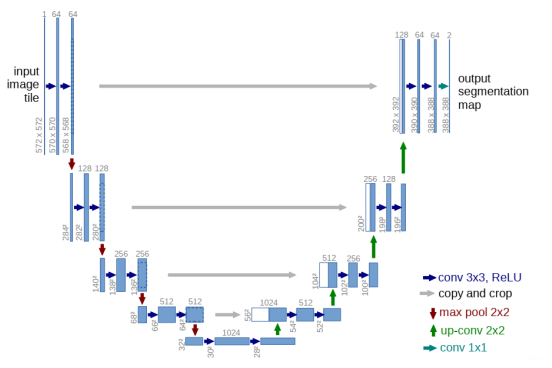
Double convolution structure
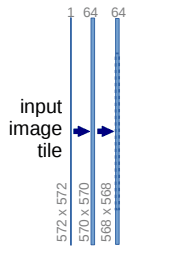
class DoubleConv(nn.Module):
def __init__(self, in_channels, out_channels, mid_channels=None):
super().__init__()
if not mid_channels:
mid_channels = out_channels
self.double_conv = nn.Sequential(
nn.Conv2d(in_channels, mid_channels, kernel_size=3, padding=1),
nn.BatchNorm2d(mid_channels),
nn.ReLU(inplace=True),
nn.Conv2d(mid_channels, out_channels, kernel_size=3, padding=1),
nn.BatchNorm2d(out_channels),
nn.ReLU(inplace=True)
)
def forward(self, x):
return self.double_conv(x)
Down sampling
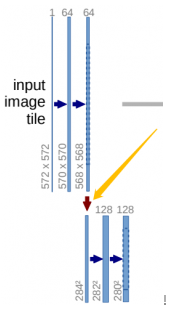
class Down(nn.Module):
def __init__(self, in_channels, out_channels):
super().__init__()
self.maxpool_conv = nn.Sequential(
nn.MaxPool2d(2),
DoubleConv(in_channels, out_channels)
)
def forward(self, x):
return self.maxpool_conv(x)
On the sampling
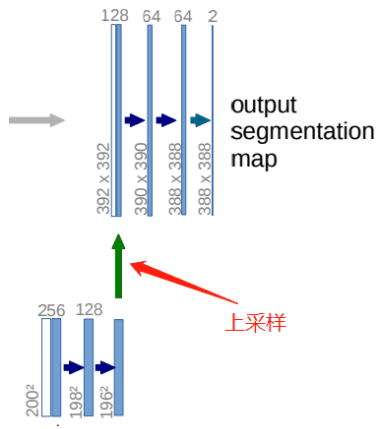
class Up(nn.Module):
def __init__(self, in_channels, out_channels, bilinear=True):
super().__init__()
if bilinear:
self.up = nn.Upsample(
scale_factor=2, mode='bilinear', align_corners=True)
self.conv = DoubleConv(in_channels, out_channels, in_channels // 2)
else:
self.up = nn.ConvTranspose2d(
in_channels, in_channels // 2, kernel_size=2, stride=2)
self.conv = DoubleConv(in_channels, out_channels)
def forward(self, x1, x2):
x1 = self.up(x1)
# input is CHW
diffY = x2.size()[2] - x1.size()[2]
diffX = x2.size()[3] - x1.size()[3]
x1 = F.pad(x1, [diffX // 2, diffX - diffX // 2,
diffY // 2, diffY - diffY // 2])
x = torch.cat([x2, x1], dim=1)
return self.conv(x)
Output
class OutConv(nn.Module):
def __init__(self, in_channels, out_channels):
super(OutConv, self).__init__()
self.conv = nn.Conv2d(in_channels, out_channels, kernel_size=1)
def forward(self, x):
return self.conv(x)
The overall structure
class UNet(nn.Module):
def __init__(self, n_channels, n_classes, bilinear=True):
super(UNet, self).__init__()
self.n_channels = n_channels
self.n_classes = n_classes
self.bilinear = bilinear
self.inc = DoubleConv(n_channels, 64)
self.down1 = Down(64, 128)
self.down2 = Down(128, 256)
self.down3 = Down(256, 512)
factor = 2 if bilinear else 1
self.down4 = Down(512, 1024 // factor)
self.up1 = Up(1024, 512 // factor, bilinear)
self.up2 = Up(512, 256 // factor, bilinear)
self.up3 = Up(256, 128 // factor, bilinear)
self.up4 = Up(128, 64, bilinear)
self.outc = OutConv(64, n_classes)
def forward(self, x):
x1 = self.inc(x)
x2 = self.down1(x1)
x3 = self.down2(x2)
x4 = self.down3(x3)
x5 = self.down4(x4)
x = self.up1(x5, x4)
x = self.up2(x, x3)
x = self.up3(x, x2)
x = self.up4(x, x1)
logits = self.outc(x)
return logits
5. Evaluation indicators :MIoU

# Get the confusion matrix
def _fast_hist(label_true, label_pred, n_class):
mask = (label_true >= 0) & (label_true < n_class)
hist = np.bincount(
n_class * label_true[mask].astype(int) +
label_pred[mask], minlength=n_class ** 2).reshape(n_class, n_class)
return hist
# Calculation MIOU
def miou_score(label_trues, label_preds, n_class):
hist = np.zeros((n_class, n_class))
for lt, lp in zip(label_trues, label_preds):
hist += _fast_hist(lt.flatten(), lp.flatten(), n_class)
iou = np.diag(hist) / (hist.sum(axis=1) + hist.sum(axis=0) - np.diag(hist))
miou = np.nanmean(iou)
return miou
6. Training
GPU_ID = 0
INPUT_WIDTH = 200
INPUT_HEIGHT = 200
BATCH_SIZE = 2
NUM_CLASSES = 22
LEARNING_RATE = 1e-3
epoch = 300
net = UNet(3, NUM_CLASSES)
# -------------------- Generate csv ------------------
DATA_ROOT = './MSRC2/'
image = os.path.join(DATA_ROOT, 'Images')
label = os.path.join(DATA_ROOT, 'GroundTruth')
slice_data = [0.7, 0.1, 0.2] # Training verification Percentage of tests
tocsv = image2csv(DATA_ROOT, image, label, slice_data,
INPUT_WIDTH, INPUT_HEIGHT)
tocsv.generate_csv()
# -------------------------------------------
model_path = './model_result/best_model_UNet.mdl'
train_csv_dir = 'MSRC2/train.csv'
val_csv_dir = 'MSRC2/val.csv'
train_data = CustomDataset(train_csv_dir, INPUT_WIDTH, INPUT_HEIGHT)
train_dataloader = DataLoader(
train_data, batch_size=BATCH_SIZE, shuffle=True, num_workers=0)
val_data = CustomDataset(val_csv_dir, INPUT_WIDTH, INPUT_HEIGHT)
val_dataloader = DataLoader(
val_data, batch_size=BATCH_SIZE, shuffle=True, num_workers=0)
net = UNet(3, NUM_CLASSES)
use_gpu = torch.cuda.is_available()
# To build the network
optimizer = optim.Adam(net.parameters(), lr=LEARNING_RATE, weight_decay=1e-4)
criterion = nn.CrossEntropyLoss()
if use_gpu:
torch.cuda.set_device(GPU_ID)
net.cuda()
criterion = criterion.cuda()
if os.path.exists(model_path):
net.load_state_dict(torch.load(model_path))
print('successful load weight!')
else:
print('not successful load weight')
# Training validation
# def train():
best_score = 0.0
for e in range(epoch):
net.train()
train_loss = 0.0
label_true = torch.LongTensor()
label_pred = torch.LongTensor()
for i, (batchdata, batchlabel) in enumerate(train_dataloader):
if use_gpu:
batchdata, batchlabel = batchdata.cuda(), batchlabel.cuda()
output = net(batchdata)
output = F.log_softmax(output, dim=1)
loss = criterion(output, batchlabel)
pred = output.argmax(dim=1).squeeze().data.cpu()
real = batchlabel.data.cpu()
optimizer.zero_grad()
loss.backward()
optimizer.step()
train_loss += loss.cpu().item() * batchlabel.size(0)
label_true = torch.cat((label_true, real), dim=0)
label_pred = torch.cat((label_pred, pred), dim=0)
train_loss /= len(train_data)
miou = miou_score(
label_true.numpy(), label_pred.numpy(), NUM_CLASSES)
print('\nepoch:{}, train_loss:{:.4f},miou:{:.4f}'.format(
e + 1, train_loss, miou))
net.eval()
val_loss = 0.0
val_label_true = torch.LongTensor()
val_label_pred = torch.LongTensor()
with torch.no_grad():
for i, (batchdata, batchlabel) in enumerate(val_dataloader):
if use_gpu:
batchdata, batchlabel = batchdata.cuda(), batchlabel.cuda()
output = net(batchdata)
output = F.log_softmax(output, dim=1)
loss = criterion(output, batchlabel)
pred = output.argmax(dim=1).data.cpu()
real = batchlabel.data.cpu()
val_loss += loss.cpu().item() * batchlabel.size(0)
val_label_true = torch.cat((val_label_true, real), dim=0)
val_label_pred = torch.cat((val_label_pred, pred), dim=0)
val_loss /= len(val_data)
val_miou = miou_score(val_label_true.numpy(),
val_label_pred.numpy(), NUM_CLASSES)
print('epoch:{}, val_loss:{:.4f}, miou:{:.4f}'.format(
e + 1, val_loss, val_miou))
# Pass the val_miou To judge the effect of the model , Save the best model weights
score = val_miou
if score > best_score:
best_score = score
torch.save(net.state_dict(), model_path)
7. test
GPU_ID = 0
INPUT_WIDTH = 200
INPUT_HEIGHT = 200
BATCH_SIZE = 2
NUM_CLASSES = 22
LEARNING_RATE = 1e-3
model_path = './model_result/best_model_UNet.mdl'
torch.cuda.set_device(0)
net = UNet(3, NUM_CLASSES)
# Load the network for testing
test_csv_dir = './MSRC2/train.csv'
testset = CustomDataset(test_csv_dir, INPUT_WIDTH, INPUT_HEIGHT)
test_dataloader = DataLoader(testset, batch_size=15, shuffle=False)
net.load_state_dict(torch.load(model_path, map_location='cuda:0'))
test_label_true = torch.LongTensor()
test_label_pred = torch.LongTensor()
# Only one is extracted here batch To test , namely 15 A picture
for (val_image, val_label) in test_dataloader:
net.cuda()
out = net(val_image.cuda())
pred = out.argmax(dim=1).squeeze().data.cpu().numpy()
label = val_label.data.numpy()
output = F.log_softmax(out, dim=1)
pred = output.argmax(dim=1).data.cpu()
real = val_label.data.cpu()
test_label_true = torch.cat((test_label_true, real), dim=0)
test_label_pred = torch.cat((test_label_pred, pred), dim=0)
test_miou = miou_score(test_label_true.numpy(),
test_label_pred.numpy(), NUM_CLASSES)
print(" On test set miou by :" + str(test_miou))
val_pred, val_label = label2image(NUM_CLASSES)(pred, label)
for i in range(15):
val_imag = val_image[i]
val_pre = val_pred[i]
val_labe = val_label[i]
# Anti normalization
mean = [.485, .456, .406]
std = [.229, .224, .225]
x = val_imag
for j in range(3):
x[j] = x[j].mul(std[j])+mean[j]
img = x.mul(255).byte()
img = img.numpy().transpose((1, 2, 0)) # Original picture
fig, ax = plt.subplots(1, 3, figsize=(30, 30))
ax[0].imshow(img)
ax[1].imshow(val_labe)
ax[2].imshow(val_pre)
plt.show()
plt.savefig('./pic_results/pic_UNet_{}.png'.format(i))
break
Theoretically , You should test with a test set , But the results of the test are unbearable . It may be caused by insufficient training times , In the above code , Directly import the training set to view , Here are and GroundTruth Compare with the reference figure .



Complete source code
Experiment source code +MSRC2 Data sets
https://pan.baidu.com/s/1WSgs1fVVfKL4poBFjhaBfA?pwd=8888
边栏推荐
- Introduction and use of Kitti dataset
- 上半年晋升 P8 成功,还买了别墅!
- JSON parsing instance (QT including source code)
- 时空可变形卷积用于压缩视频质量增强(STDF)
- 一文读懂数仓中的pg_stat
- PG basics -- Logical Structure Management (locking mechanism -- table lock)
- Cocoscreator resource encryption and decryption
- Ctfshow, information collection: web14
- CTFshow,信息搜集:web12
- What is cloud primordial? This time, I can finally understand!
猜你喜欢
![[understanding of opportunity -40]: direction, rules, choice, effort, fairness, cognition, ability, action, read the five layers of perception of 3GPP 6G white paper](/img/38/cc5bb5eaa3dcee5ae2d51a904cf26a.png)
[understanding of opportunity -40]: direction, rules, choice, effort, fairness, cognition, ability, action, read the five layers of perception of 3GPP 6G white paper
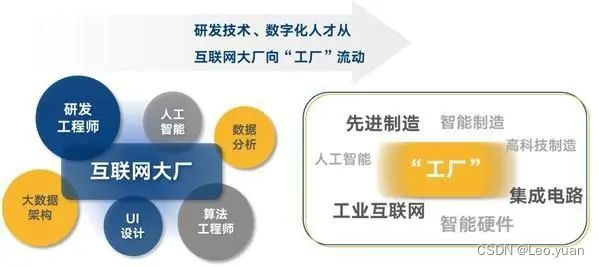
拜拜了,大厂!今天我就要去厂里
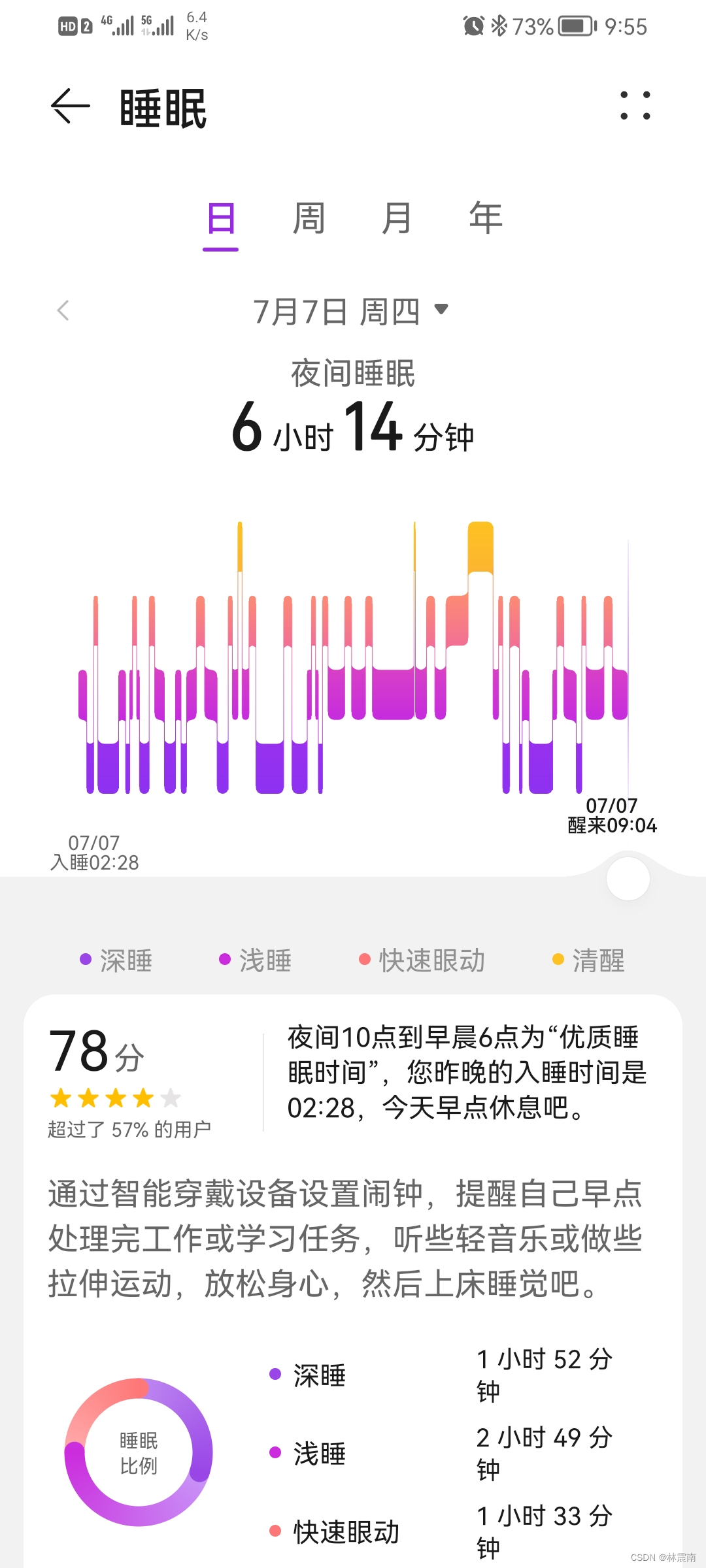
Today's sleep quality record 78 points

Deformable convolutional dense network for enhancing compressed video quality
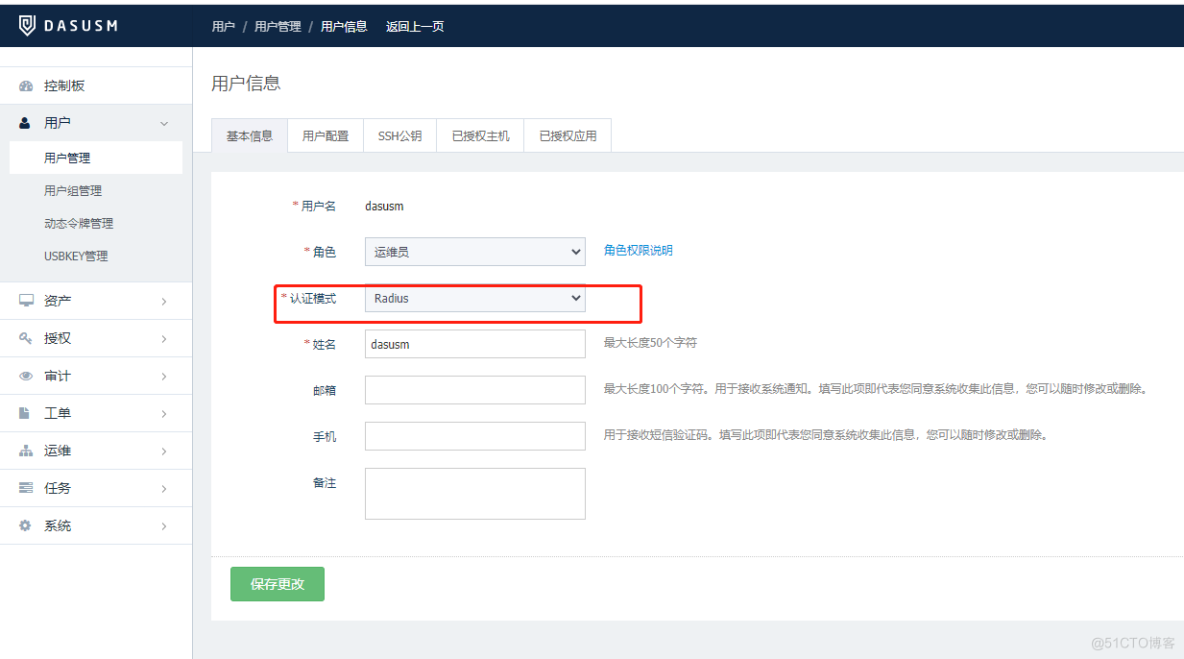
How to enable radius two factor / two factor (2fa) identity authentication for Anheng fortress machine
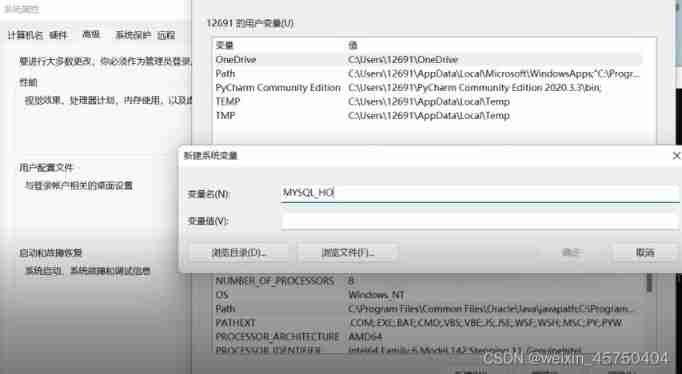
MySQL installation configuration 2021 in Windows Environment

Stm32cubemx, 68 sets of components, following 10 open source protocols

用于增强压缩视频质量的可变形卷积密集网络

Ctfshow, information collection: web5
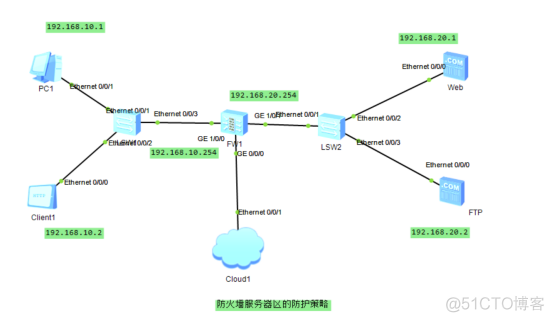
Protection strategy of server area based on Firewall
随机推荐
Deformable convolutional dense network for enhancing compressed video quality
PG basics -- Logical Structure Management (locking mechanism -- table lock)
数学建模——什么是数学建模
Read PG in data warehouse in one article_ stat
PG基础篇--逻辑结构管理(锁机制--表锁)
IDA pro逆向工具寻找socket server的IP和port
微信小程序 01
Ctfshow, information collection: web6
[server data recovery] a case of RAID data recovery of a brand StorageWorks server
Stream learning notes
Niuke real problem programming - Day17
Spatiotemporal deformable convolution for compressed video quality enhancement (STDF)
MySQL bit类型解析
用于增强压缩视频质量的可变形卷积密集网络
Integer learning
【服务器数据恢复】戴尔某型号服务器raid故障的数据恢复案例
Navigation — 这么好用的导航框架你确定不来看看?
Five pain points for big companies to open source
Several ways of JS jump link
CTFshow,信息搜集:web10